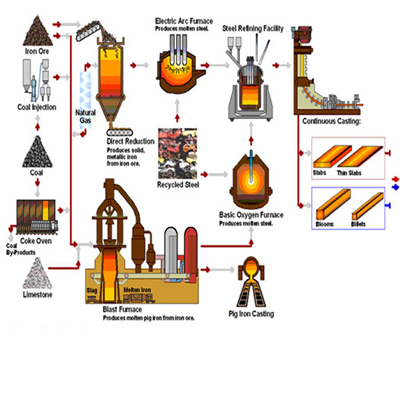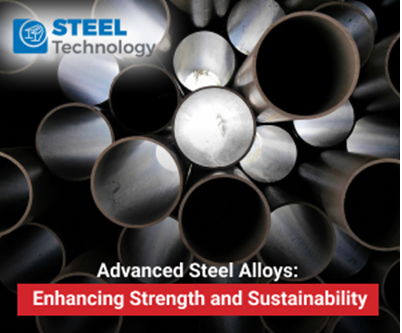Applications and Market Trends of Minor Metals in the Steel Industry

Minor metals play crucial roles in the steel industry, contributing to the improvement of steel properties, enhancing performance, and enabling the production of specialized alloys. Here are some key applications and market trends of minor metals in the steel industry:\
| Also Read: How Do Minor Metals Enhance Steel Performance in Industry? |
1. Vanadium (V):
- Application: Vanadium is commonly used as a microalloying element in steel, especially in high-strength low-alloy (HSLA) steels. It refines the grain structure, strengthens the steel, and improves its toughness.
- Market Trend: The demand for vanadium is influenced by the growth in infrastructure projects and the production of high-strength steels for applications in the construction, automotive, and aerospace industries.
2. Molybdenum (Mo):
- Application: Molybdenum is used as an alloying element to enhance the strength, hardness, and corrosion resistance of steel. It is particularly important in stainless steels and high-temperature applications.
- Market Trend: The increasing demand for stainless steel in various industries, including construction, automotive, and chemical processing, is driving the demand for molybdenum.
3. Niobium (Nb):
- Application: Niobium is commonly used as a microalloying element in HSLA steels to improve strength, toughness, and weldability. It forms carbides, which refine the grain structure of the steel.
- Market Trend: The demand for niobium is influenced by the production of high-strength, low-alloy steels for applications in construction, pipelines, and automotive manufacturing.
| Also Read: Balancing Act: Incorporating Minor Metals in Steelmaking for Superior Results |
4. Tungsten (W):
- Application: Tungsten is used in steel production to improve hardness, wear resistance, and high-temperature performance. It is commonly found in tool steels and high-speed steels.
- Market Trend: The demand for tungsten in the steel industry is tied to the manufacturing of cutting tools, drills, and components for industries such as automotive, aerospace, and machining.
5. Chromium (Cr):
- Application: Chromium is a key component in stainless steel production, providing corrosion resistance and durability. It is also used in various alloy steels.
- Market Trend: The growth in demand for stainless steel in construction, kitchen appliances, and automotive applications is a significant driver for chromium demand.
6. Cobalt (Co):
- Application: Cobalt is used in certain specialty steels and alloys, including high-speed steels and magnetic steels.
- Market Trend: The demand for cobalt in the steel industry is influenced by its use in niche applications, such as aerospace, electronics, and specialty tool manufacturing.
7. Titanium (Ti):
- Application: Titanium is used in small quantities in certain steel alloys to improve corrosion resistance and strength.
- Market Trend: The demand for titanium in the steel industry is driven by specific applications where corrosion resistance and high strength are critical, such as in marine environments and chemical processing.
8. Zirconium (Zr):
- Application: Zirconium is used in certain steel alloys to improve corrosion resistance and to control grain size.
- Market Trend: Zirconium's demand in the steel industry is influenced by applications where corrosion resistance is essential, such as in chemical processing plants and certain specialized equipment.
9. Rare Earth Elements (REEs):
- Application: Some rare earth elements, such as cerium and lanthanum, are used in small amounts for grain refinement and inclusion modification in steel.
- Market Trend: The application of specific rare earth elements in the steel industry is niche, and their demand is influenced by technological advancements in steel production processes.
| Also Read: The Vital Role of Minor Metals in Steel Industry |
The trends in the steel industry regarding minor metals are intricately linked to advancements in infrastructure, construction, automotive manufacturing, and the demand for specialized steel alloys driven by technological progress. The emphasis on lightweight and high-performance materials across different sectors is expected to contribute significantly to the growing demand for minor metals in steel production. Furthermore, environmental considerations and regulatory standards are likely to influence the choice of alloying elements, guiding manufacturers towards options that not only achieve desired properties but also minimize environmental impact.











